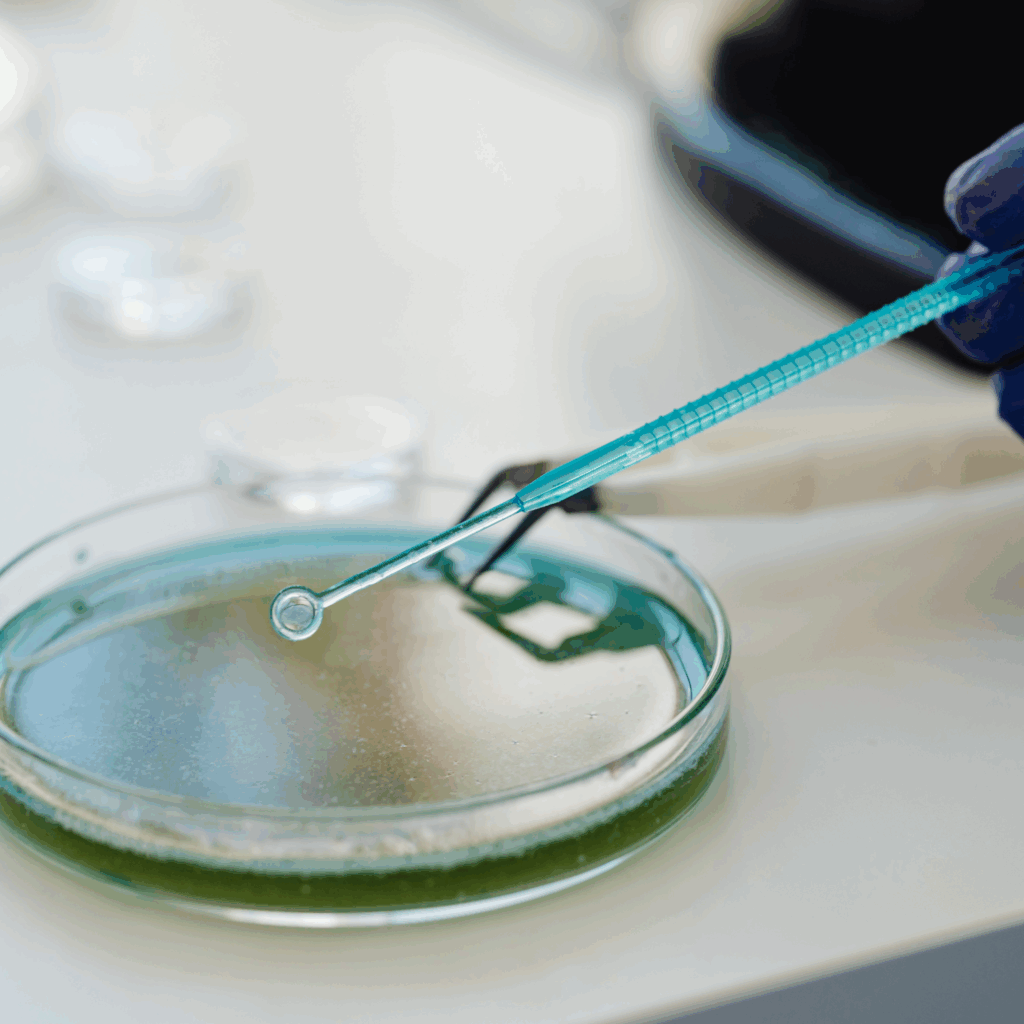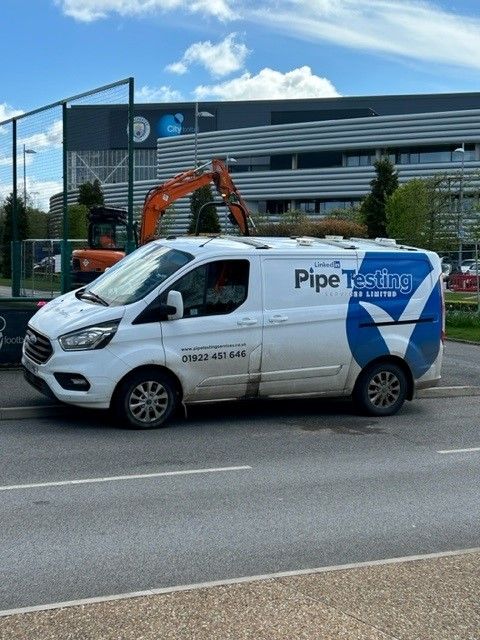UKAS Water Sampling After Chlorination
The United Kingdom places the highest priority on providing safe and reliable potable water. While chlorination is a cornerstone of this effort, the process does not end with disinfection. Experts at Pipe Testing Services (PTS) conduct water sampling after chlorination as an essential final step. This process verifies the treatment’s effectiveness, confirms safety, and ensures full regulatory compliance for your water system.
Context: Why Is Chlorination and Water Sampling Important?
After the chlorination process is complete on new or existing pipework, PTS conducts water sampling to assess the effectiveness of the disinfection. This critical step is necessary because residual chlorine levels and the presence of any remaining microorganisms must be evaluated before the system can be approved for use. Therefore, sampling confirms that the newly disinfected system can deliver safe, potable water that meets all required UK quality standards.

Applications for Water Sampling After Chlorination
Water sampling is a mandatory or highly recommended step in various scenarios:
- New Construction Sites: Sampling is particularly important in construction projects involving new pipework installations or renovations. It ensures that the new pipes are properly disinfected before they are connected to the main water supply, preventing potential contamination.
- Water Treatment Facilities: Routine sampling verifies that ongoing treatment processes are effective.
- As part of a comprehensive water safety plan, sampling can verify the effectiveness of remedial disinfection works. This is a key part of our Chlorination and Legionella Control service.
Sampling Methodology and Key Parameters Tested
Water sampling after chlorination involves the collection of representative samples from various points within the disinfected system. PTS then sends these samples to be analysed by accredited laboratories to assess various parameters. Our process adheres to the highest industry standards, ensuring reliable and accurate results.
Microbiological Analysis
This is the core of the testing process. Samples are tested for the presence of harmful microorganisms to verify the effectiveness of the disinfection.
Key tests include:
* E. coli and other coliform bacteria: Their absence is a primary indicator of safe, potable water.
* Total Viable Counts (TVC): Measures the overall concentration of bacteria to assess general water quality.
Residual Chlorine Levels
Measuring the remaining chlorine concentration is crucial. This test ensures that adequate disinfection has occurred and that the residual level is sufficient to prevent potential microbial regrowth during distribution, while still being within safe limits for consumption.
Disinfection By-Products (DBPs)
While chlorine is effective, it can react with organic matter in the water to form potentially harmful by-products, such as trihalomethanes (THMs). Consequently, these by-products must be monitored to ensure they remain within acceptable, safe limits.
Physical and Chemical Parameters
In addition, we conduct further tests to assess pH, turbidity (clarity), and other water quality indicators. These parameters can impact the effectiveness of chlorination and overall water safety.
Compliance and Regulatory Requirements
Water sampling after chlorination is best practice within the industry, and, more importantly, a regulatory requirement in the United Kingdom. The Water Supply (Water Quality) Regulations 2016 and other relevant guidelines set forth strict standards for water quality and sampling procedures.
Failure to conduct proper water sampling and meet the prescribed standards can result in significant consequences, including fines, legal action, and potential health risks to the public. It is essential that water suppliers and contractors adhere to these regulations to maintain public trust and ensure the continuous provision of safe drinking water.
Why Choose PTS for Professional Water Sampling Services?
Partnering with a professional service like Pipe Testing Services provides numerous advantages for this critical task:
- Expertise and Experience: Our team of highly trained professionals is well-versed in the latest water sampling techniques, regulatory requirements, and the stringent Chlorination Safety Protocols required on site.
- Accredited Laboratories: We exclusively use independent, UKAS (United Kingdom Accreditation Service) accredited laboratories for all our sample analysis. This guarantees that your test results are impartial, accurate, and meet the highest quality standards recognised by UK regulators.
- Comprehensive Reporting and Certification: We provide detailed laboratory reports and issue Chlorination Certificates Explained on our dedicated page. This documentation is essential for audits and demonstrating regulatory compliance.
Get in Touch with PTS for Water Sampling Expertise
When it comes to ensuring safe, compliant, and reliable water systems, trust the professionals at Pipe Testing Services (PTS). Our team’s in-depth knowledge, rigorous training, and adherence to protocols ensure your water sampling requirements are met with uncompromising standards. Contact us today to leverage our specialised water sampling services. We operate nationwide across the UK and are ready to provide a personalised quote.


- Phone – 01922 451646
- Email – enquiries@pipetestingservices.co.uk
- Address – Unit 27 Birchbrook Industrial Estate, Shenstone, Lichfield, Staffs, WS14 0DJ
FAQs - Water Sampling & Chlorination
How often should water sampling be conducted after chlorination?
Frequency of water sampling depends on the specific project or system. Generally, it is recommended to conduct sampling immediately after chlorination and at regular intervals until the system is deemed safe for use.
What are the acceptable limits for residual chlorine levels?
The acceptable limits for residual chlorine levels may vary depending on the specific water regulations and guidelines in your area. Typically, a minimum residual chlorine level of 0.2 mg/L is recommended to ensure adequate disinfection.
Can water sampling detect all types of contaminants?
No, water sampling typically focuses on specific parameters such as microbiological contaminants, residual chlorine levels, and disinfection by-products. Additional testing may be required to detect other types of contaminants, such as heavy metals or organic pollutants.
How long does it take to receive water sample test results?
At PTS, our turn around time for water sample test results can vary depending on the laboratory and the specific tests being conducted. Generally, you can expect to receive results within a few days to a week after the samples have been submitted.
What happens if water sample results fail to meet the required standards?
If water sample results fail to meet the required standards, corrective actions may be necessary. We can continue with additional chlorination, flushing, or other remedial measures. In some cases, the affected system may need to be isolated until the water quality issues are resolved.
Can water sampling be performed on existing water systems?
Yes, water sampling can and should be performed on existing water systems, particularly after any maintenance, repairs, or disinfection treatments. Regular water monitoring helps ensure the ongoing safety and compliance of the water supply.
